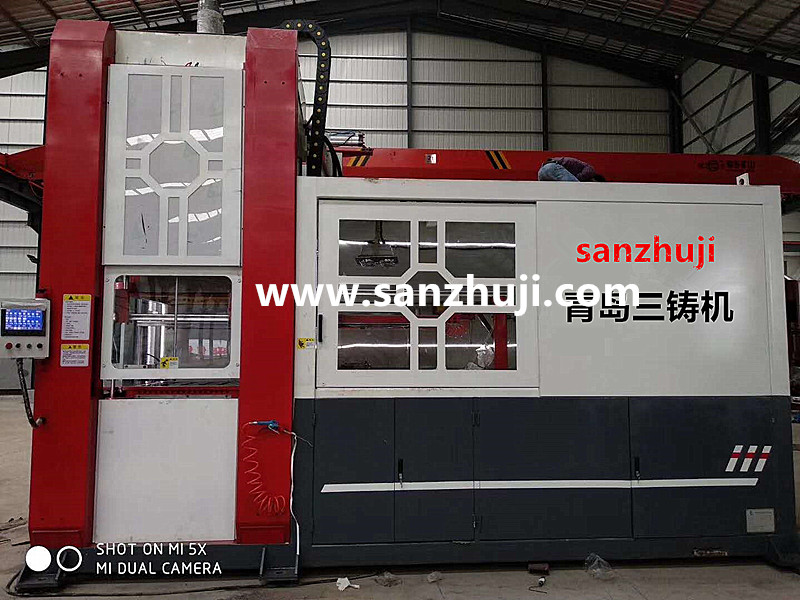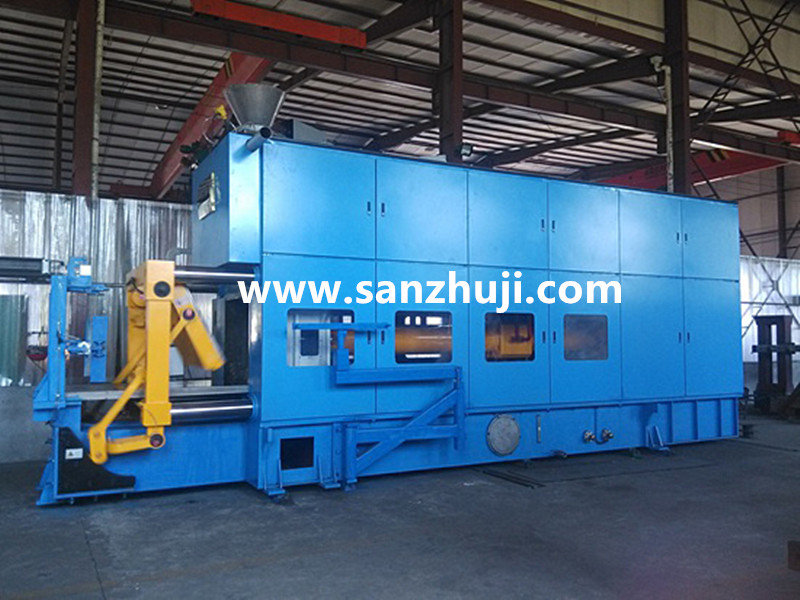4. Pouring process requirements
4.1 Preparation before pouring
4.11 Know the positions of various casting molds in the workshop to determine the pouring order.
4.12 Check the placement of the gate and riser ring and the fastening of the mold.
4.13 Clean the pouring site to ensure pouring safety.
4.2 Key points of pouring operation
In order to obtain qualified castings, the pouring temperature and pouring speed must be controlled, and the pouring operating procedures must be strictly followed.
4.21 Pouring temperature
The pouring temperature has a great influence on the quality of the casting, so a reasonable pouring temperature range should be determined according to the alloy type, casting structure and mold characteristics. When molten metal is poured into the ladle from the furnace, the temperature will decrease. According to the carbon steel model, choose the appropriate pouring temperature, generally the pouring temperature is 1540-1580℃ (the temperature of the molten steel in the ladle).
4.22 Pouring operation points
4.221 The slag on the molten metal surface in the ladle must be removed before pouring.
4.222 Pouring is carried out according to the specified pouring speed and time range.
4.223 For molds with risers, point injection and refill should be carried out in the later stage of casting according to the process specifications. After pouring and forming large and medium-sized castings, the riser should be insulated with heat preservation salt. Make up the fire in a timely manner. The large riser needs to be made up for multiple times. The time for making up the fire should be controlled before the molten steel in the riser solidifies and crusts.
4.224 Generally, when pouring large and medium-sized steel castings, the molten steel should be placed in the ladle for 1-2 minutes before being sedated.
4.225 Under the condition that the gas in the cavity is discharged smoothly, a higher pouring speed can be used for castings that require simultaneous solidification, and a lower pouring speed should be used as far as possible for castings that require sequential solidification.
4.226 When thicker and large castings or bottom pouring system are used, the pouring speed can be fast and then slow, and for thin-walled small parts, the pouring speed can be slow and then fast.
4.227 The temperature is high and slow, and the temperature is low; the drainage is accurate, the pouring is stable, and the flow is violent; the bag mouth is close to the cup, continuous flow, no clinking, pay attention to blocking slag, prevent splashing, no half pouring, and point filling (shrinking) allowed In case of leakage, deal with it promptly.
4.228 After pouring, when the casting is solidified, the weight and box clamp must be removed in time to reduce the shrinkage resistance of the casting and avoid cracks.
5. Casting cleaning
After the casting is solidified and cooled to a certain temperature, the casting is taken out of the sand box, and the process of removing the molding sand and core sand from the surface of the casting and the inner cavity is called sand falling, which is usually divided into artificial sand falling and mechanical sand falling. . Before the casting is completely solidified, it is not allowed to move the casting, nor to spray water for forced cooling above 600℃. Castings are generally cleaned after natural cooling for 2-3 hours.
5.1 Work flow
Clean the casting surface, cavity waste sand → gas cutting casting gate, riser, burr → clean the casting residual sand again → weld the casting → polish the casting → quality acceptance
5.2 Operation methods and quality standards
5.21 Preparations: Wear labor protection supplies as required, and confirm the safety of the working environment; prepare the machinery and tools used, and carefully inspect them to ensure that the machinery, equipment and tools are in good condition and can operate and use normally and safely.
5.22 Normal operation: Use a pneumatic pick or water cleaning machine to clean up the waste sand of castings.
5.23 After the waste sand of castings has been cleaned up, operate the cutting gun in accordance with the "Gas Cutting Safety Technical Operating Regulations" to cut the casting gates, risers, flashes and burrs.
5.24 The casting is cut and meets the requirements. Operate the electric welding machine in accordance with the "Safety Technical Operating Regulations for Electric Welders" to repair the defective parts of the casting to ensure the integrity of the casting.
5.25 Welding repair is completed, compound process requirements. Use a grinder to polish the cutting and welding parts of the castings to ensure that the cutting and welding parts are smooth and smooth.
5.26 Finished grinding, check and accept, prepare for heat treatment
6. Annealing and heat treatment of steel castings
Annealing of steel castings is a heat treatment process in which steel castings are heated to 20-30°C above AC3 and cooled for a certain period of time.
6.1 General requirements for annealing heat treatment process:
6.11 Raise and cool according to the heat treatment process requirements.
6.12 Anneal the castings that need heat treatment according to the alloy type, casting size, and wall thickness.
6.13 Choose an appropriate heating rate according to the shape, wall thickness and chemical composition of the casting.
6.2 Specific operation of annealing heat treatment
6.21 Inspection of annealing furnace
6.22 The furnace door is closed normally and tightly.
6.23 There is no smoke or fire phenomenon.
6.24 The thermocouple is intact.
6.25 The thermometer indicates normal.
6.26 The blower is operating normally
6.3 Requirements for workpiece filling:
6.31 The loading of the workpiece must not be too tight, and a certain gap must be left.
6.32 The stacking of workpieces must be stable and neat.
6.33 The stacking of workpieces should adhere to the principle of preventing heating deformation.
6.4 Workpiece heating, heat preservation, cooling requirements
6.41 Heating: usually heating to 860°C at a rate of 200-400°C/hour.
6.42 Heat preservation: The heat preservation time is about 2-3 hours according to the thickness of the workpiece.
6.43 Cooling: Slowly cool down to 500°C with the furnace, then come out of the furnace, and the air cools to normal.
6.5 Workpieces out of the furnace: After the workpieces are cooled to normal temperature, they should be put out of the furnace, and they should be sorted and placed neatly.
7. Quality acceptance criteria for steel castings
7.1 The shape is complete and smooth; no flash, fin, incomplete, fleshy; no casting defects such as blisters, pores, and shrinkage holes.
7.2 The shape, size and processing volume meet the requirements of casting process drawings.
7.3 The content of various elements is within the specified range.
7.4 Meet the quality standards of GB/T11352-89 carbon steel parts for general engineering.
Qingdao Sanzhuji Equipment Manufacturing Co., Ltd. specializes in the production of sand reclamation equipment,foundry machines,Sand casting equipment,GS high efficiency rotary mixer,no-bake resin sand mixer,Jolt squeeze molding machine/Jolt-squeezing moulding machines,Multi- Piston Moulding Machine/Hydraulic multi-piston moulding machine,foundry molding machine,flaskless moulding machine,shot blasting machine,dust collector,according to the amount of old sand recovered Carry out plan customization, and provide sand reclamation equipment installation, commissioning, and training. Welcome guests to visit the factory.








